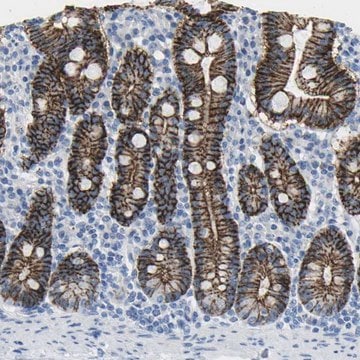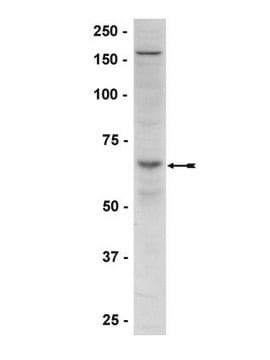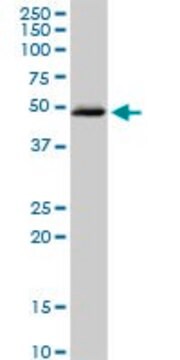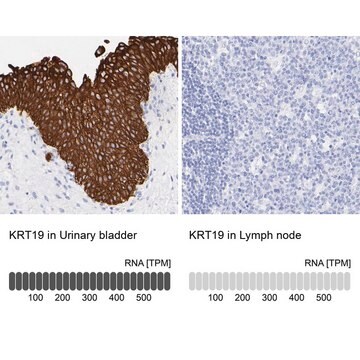ABS981
Anti-phospho-AMPK alpha-1 Antibody, (Thr479)
from rabbit, purified by affinity chromatography
Synonyme(s) :
5′-AMP-activated protein kinase catalytic subunit alpha-1, Thr479-phosphorylated, ACACA kinase, Thr479-phosphorylated, Acetyl-CoA carboxylase kinase, Thr479-phosphorylated, AMPK subunit alpha-1, Thr479-phosphorylated, AMPKa1, Thr479-phosphorylated, HMGCR
About This Item
Produits recommandés
Source biologique
rabbit
Niveau de qualité
Forme d'anticorps
affinity isolated antibody
Type de produit anticorps
primary antibodies
Clone
polyclonal
Produit purifié par
affinity chromatography
Espèces réactives
human
Réactivité de l'espèce (prédite par homologie)
bovine (based on 100% sequence homology), rat (based on 100% sequence homology), porcine (based on 100% sequence homology), horse (based on 100% sequence homology), mouse (based on 100% sequence homology)
Technique(s)
dot blot: suitable
western blot: suitable
Numéro d'accès GenBank
Numéro d'accès UniProt
Conditions d'expédition
ambient
Modification post-traductionnelle de la cible
phosphorylation (pThr479)
Informations sur le gène
human ... PRKAA1(5562)
Description générale
Spécificité
Immunogène
Application
Signaling
Western Blotting Analysis: A 1:1000 dilution from a representative lot detected GSK3beta-catalyzed phosphorylation of E. coli expressed, catalytically inactive AMPK alpha-1 recombinant protein (Courtesy of Bruce Kemp, Ph.D., St. Vincent′s Institute of Medical Research in Melbourne).
Qualité
Dot Blot Analysis: A 1:1,000 dilution of this antibody detected 20-0.156 ng of immunogen peptide, but not the corresponding non-phosphorylated peptide.
Description de la cible
Forme physique
Stockage et stabilité
Autres remarques
Informations légales
Clause de non-responsabilité
Not finding the right product?
Try our Outil de sélection de produits.
Code de la classe de stockage
12 - Non Combustible Liquids
Classe de danger pour l'eau (WGK)
WGK 1
Point d'éclair (°F)
Not applicable
Point d'éclair (°C)
Not applicable
Certificats d'analyse (COA)
Recherchez un Certificats d'analyse (COA) en saisissant le numéro de lot du produit. Les numéros de lot figurent sur l'étiquette du produit après les mots "Lot" ou "Batch".
Déjà en possession de ce produit ?
Retrouvez la documentation relative aux produits que vous avez récemment achetés dans la Bibliothèque de documents.
Notre équipe de scientifiques dispose d'une expérience dans tous les secteurs de la recherche, notamment en sciences de la vie, science des matériaux, synthèse chimique, chromatographie, analyse et dans de nombreux autres domaines..
Contacter notre Service technique








